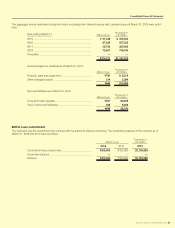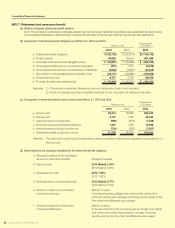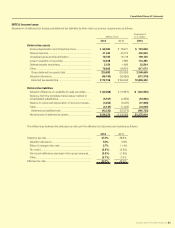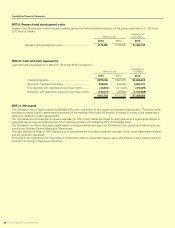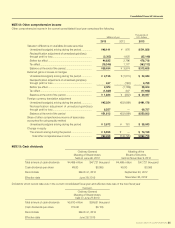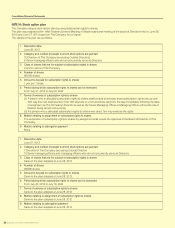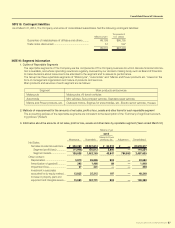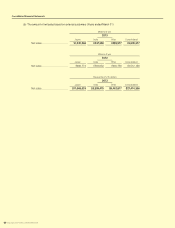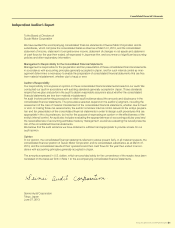Suzuki 2013 Annual Report Download - page 63
Download and view the complete annual report
Please find page 63 of the 2013 Suzuki annual report below. You can navigate through the pages in the report by either clicking on the pages listed below, or by using the keyword search tool below to find specific information within the annual report.
Consolidated Financial Statements
SUZUKI MOTOR CORPORATION 61
To the Board of Directors of
Suzuki Motor Corporation
We have audited the accompanying consolidated nancial statements of Suzuki Motor Corporation and its
subsidiaries, which comprise the consolidated balance sheet as at March 31, 2013, and the consolidated
statement of income, statement of comprehensive income, statement of changes in net assets and statement
of cash ows for the year then ended, all expressed in Japanese Yen, and a summary of signicant accounting
policies and other explanatory information.
Management’s Responsibility for the Consolidated Financial Statements
Management is responsible for the preparation and fair presentation of these consolidated nancial statements
in accordance with accounting principles generally accepted in Japan, and for such internal control as man-
agement determines is necessary to enable the preparation of consolidated nancial statements that are free
from material misstatement, whether due to fraud or error.
Auditor’s Responsibility
Our responsibility is to express an opinion on these consolidated nancial statements based on our audit. We
conducted our audit in accordance with auditing standards generally accepted in Japan. Those standards
require that we plan and perform the audit to obtain reasonable assurance about whether the consolidated
nancial statements are free from material misstatement.
An audit involves performing procedures to obtain audit evidence about the amounts and disclosures in the
consolidated nancial statements. The procedures selected depend on the auditor’s judgment, including the
assessment of the risks of material misstatement of the consolidated nancial statements, whether due to fraud
or error. In making those risk assessments, the auditor considers internal control relevant to the entity’s prepara-
tion and fair presentation of the consolidated nancial statements in order to design audit procedures that are
appropriate in the circumstances, but not for the purpose of expressing an opinion on the effectiveness of the
entity’s internal control. An audit also includes evaluating the appropriateness of accounting policies used and
the reasonableness of accounting estimates made by management, as well as evaluating the overall presenta-
tion of the consolidated nancial statements.
We believe that the audit evidence we have obtained is sufcient and appropriate to provide a basis for our
audit opinion.
Opinion
In our opinion, the consolidated nancial statements referred to above present fairly, in all material respects, the
consolidated nancial position of Suzuki Motor Corporation and its consolidated subsidiaries as at March 31,
2013, and the consolidated results of their operations and their cash ows for the year then ended in accor-
dance with accounting principles generally accepted in Japan.
The amounts expressed in U.S. dollars, which are provided solely for the convenience of the reader, have been
translated on the basis set forth in Note 1 to the accompanying consolidated nancial statements.
Seimei Audit Corporation
Tokyo, Japan
June 27, 2013
Independent Auditor’s Report


